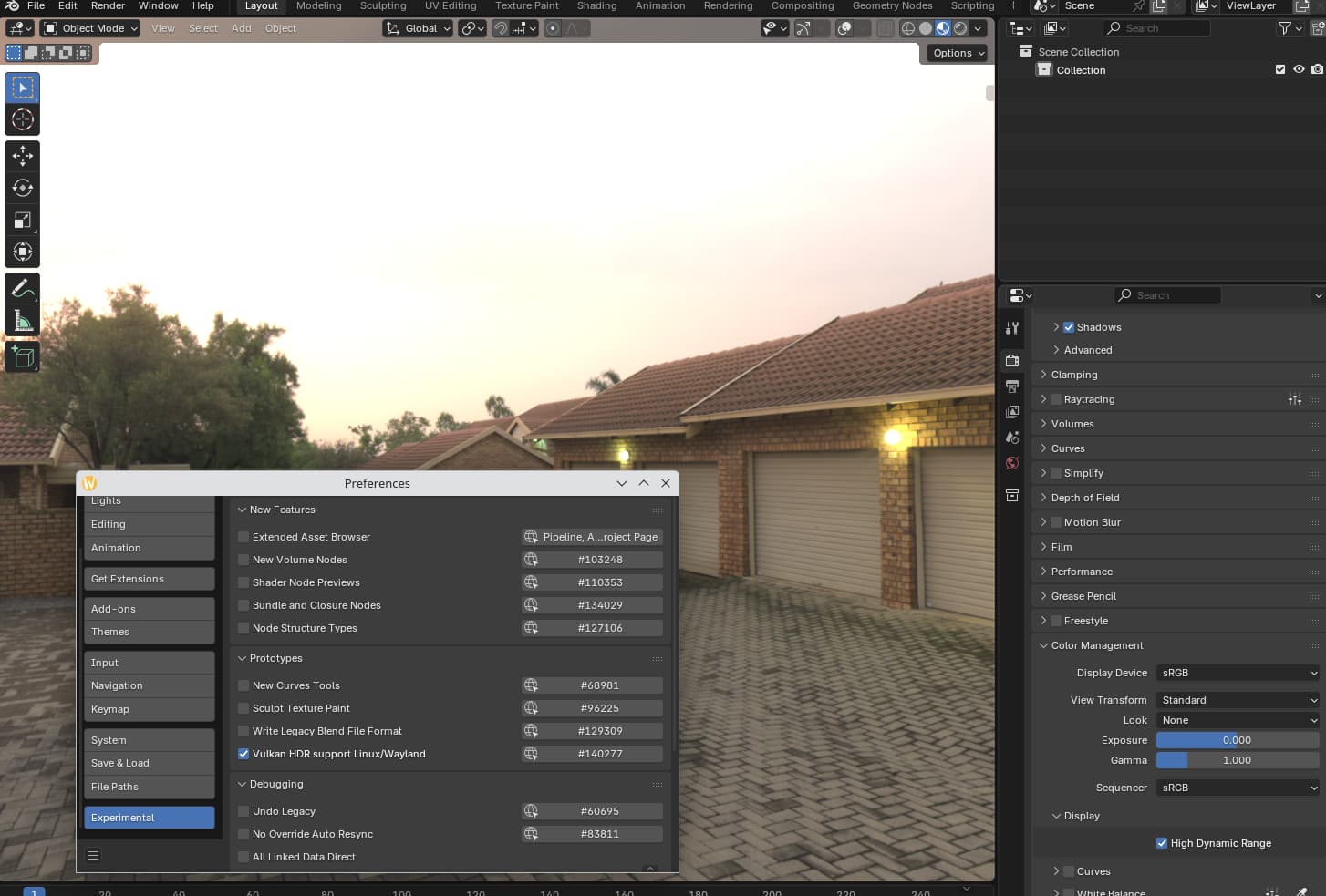
The upcoming Blender 5.0 release is set to bring a notable improvement for Linux: experimental support for High Dynamic Range (HDR) rendering when using the Wayland display server with the Vulkan graphics backend.
This is a big step towards expanding Blender’s rendering capabilities on Linux, offering a more accurate visual preview for artists working in areas like animation, visual effects, and game development.
HDR Support on Blender: Why Does it Matter?

If you're working in 3D art, animation, or visual effects, HDR can make a noticeable difference. It lets you use displays that support higher brightness, deeper contrast, and a wider range of colors, so what you see in your Blender viewport will be closer to what you’ll see on other HDR screens or in final renders.
This comes at a time when many Linux distributions are transitioning away from the older Xorg display server in favor of Wayland, which is being adopted as the new default display protocol. Wayland offers a more modern architecture designed to improve security, performance, and support for advanced graphical features.
Want to Try it Out?
If you’d like to test the feature and explore its capabilities, follow these steps:
- Download the Blender 5.0 alpha build
- Get the latest alpha version from the Blender Builds page.
- Ensure HDR is enabled on your system
- Use an HDR-capable monitor
- Run a Wayland session (e.g., GNOME or KDE Plasma)
- Enable HDR output in your system’s display settings
- Configure Blender for Vulkan and HDR
- Launch Blender and go to
Preferences > System > Display Graphics - Select Vulkan as the graphics backend
- Go to
Preferences > Interfaceand enable Developer Extras - Navigate to
Preferences > Experimentaland enable Vulkan HDR support Linux/Wayland.
- Launch Blender and go to
- Restart Blender to apply changes
You can learn more about this addition in the original post by Jeroen Bakker from the Blender team.
Via: Phoronix
- Even the biggest players in the Linux world don't care about desktop Linux users. We do.
- We don't put informational content behind paywall. Your support keeps it open for everyone. Think of it like 'pay it forward'.
- Don't like ads? With the Plus membership, you get an ad-free reading experience.
- When millions of AI-generated content is being published daily, you read and learn from real human Linux users.
- It costs just $2 a month, less than the cost of your favorite burger.
Become a Plus Member today and join over 300 people in supporting our work.










